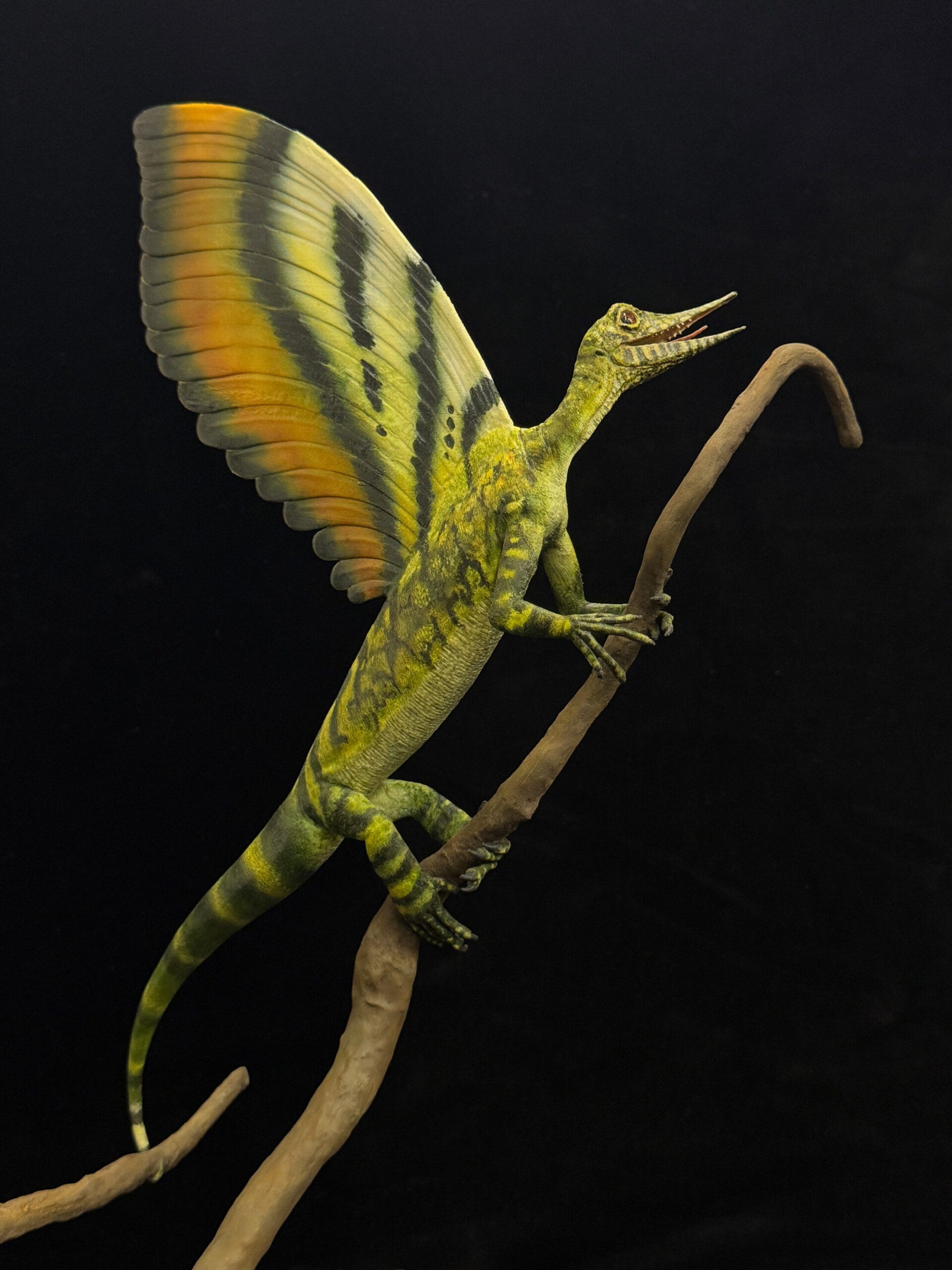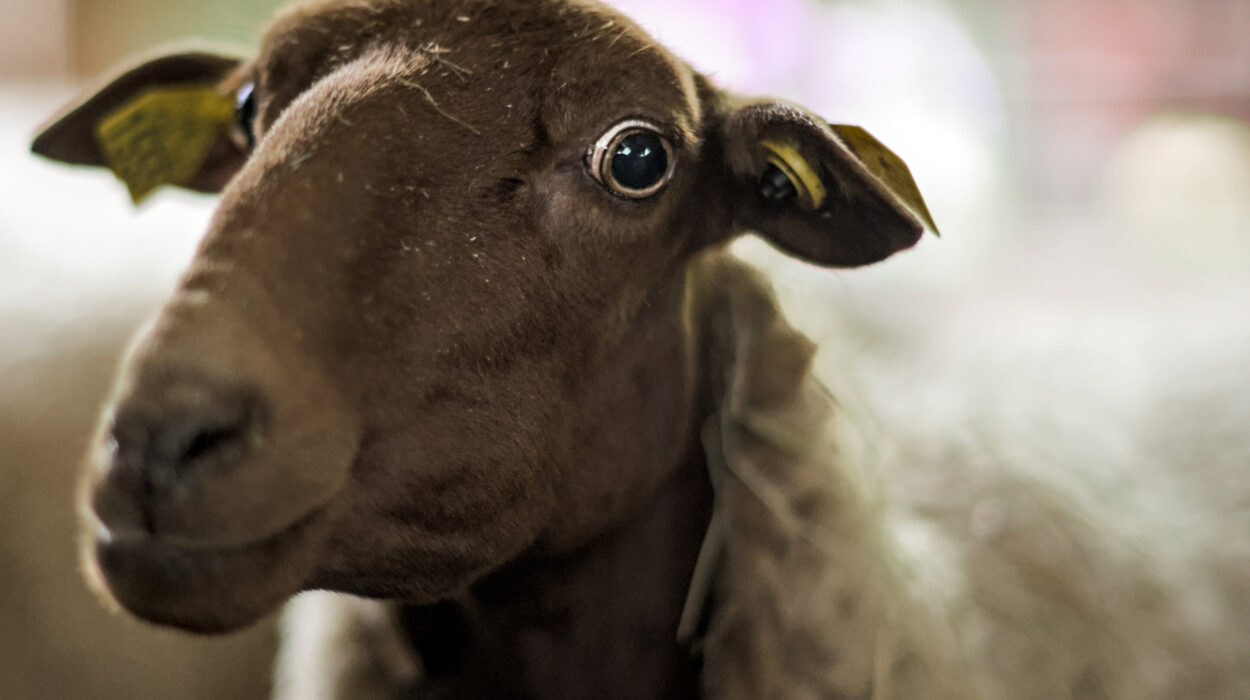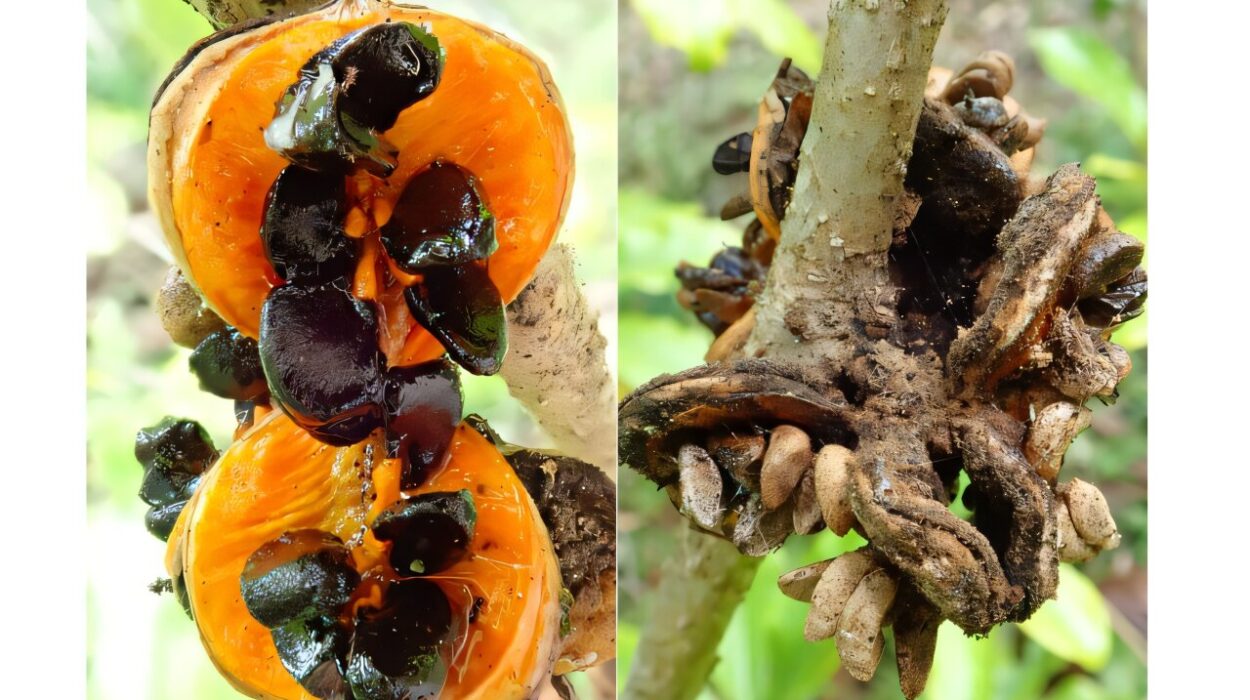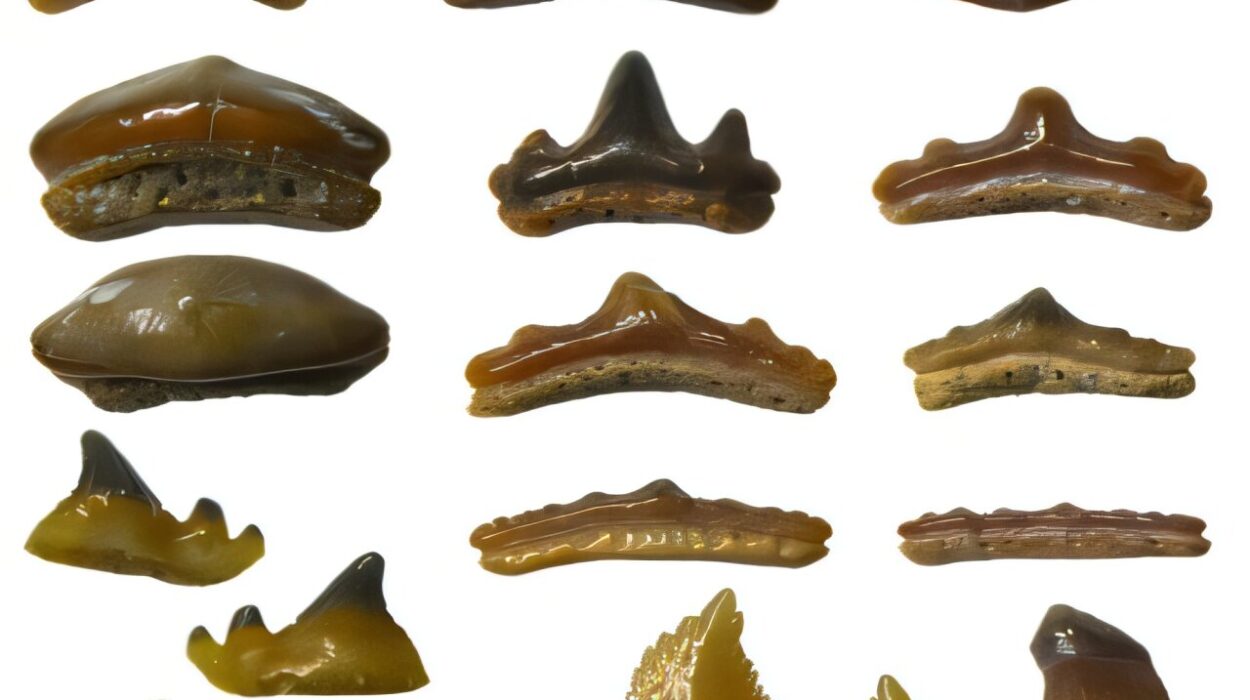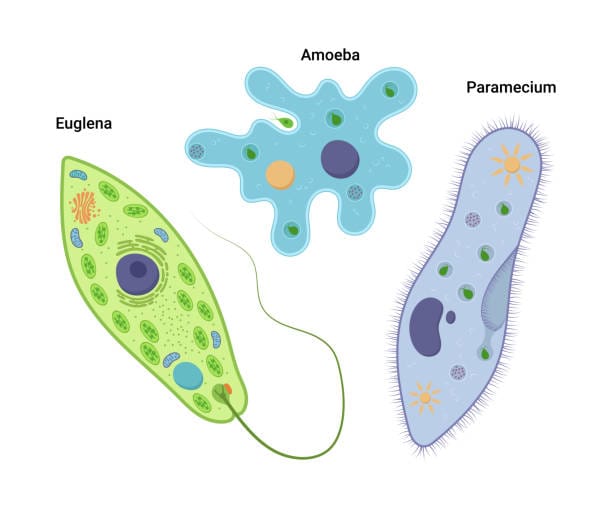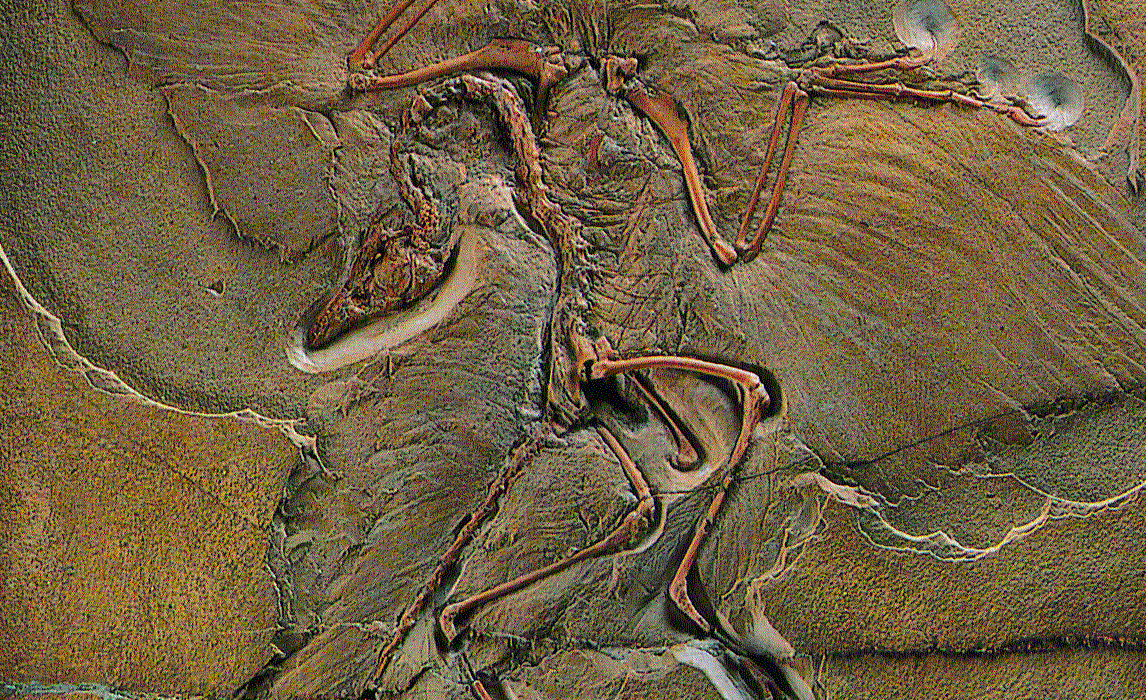For nearly a century, the fossils lay quietly beneath layers of Triassic stone, forgotten by time but guarded by it. They were gathered piece by piece by Louis Grauvogel, a passionate fossil collector in Alsace, France, who likely had no idea what secrets his rocks would one day yield. When the collection was transferred in 2019 to the State Museum of Natural History Stuttgart, something astonishing began to emerge from the sediment—a creature so bizarre and so revelatory that it would challenge the very roots of how scientists understand reptilian evolution.
This creature, a small, agile, tree-dwelling reptile that lived 247 million years ago, was named Mirasaura grauvogeli, meaning “Grauvogel’s wonder reptile.” But this was not just a new species. This was a revelation. Mirasaura bore skin structures that looked eerily similar to feathers. Not true feathers as we see in birds today, but elaborate, complex appendages—structures of display, insulation, and identity. They weren’t supposed to be here. Not in this kind of reptile. Not this early in evolutionary history.
And yet, here they were—etched in fossilized skin like a whisper from a forgotten chapter in the book of life.
An Unexpected Evolutionary Innovation
For decades, evolutionary biologists and paleontologists drew a clear line between scaly reptiles and the feathered descendants of dinosaurs—modern birds. Feathers were considered a relatively recent innovation, arising in the dinosaur lineage late in the Mesozoic era and exploding into diversity with the advent of flight. Prior to that, reptilian skin was thought to be covered in simple, flat scales.
But Mirasaura grauvogeli bends that neat narrative into something far more nuanced—and far older.
The appendages lining the dorsal crest of Mirasaura are unlike anything previously seen in early reptiles. Each one is feather-like in contour, with a narrow central ridge and a layered arrangement that gives the appearance of sophisticated design. Yet, critically, these structures lack the barbs and branching we associate with true avian feathers. They are not feathers in the strictest evolutionary sense. They are something else—something parallel.
According to Dr. Stephan Spiekman and Prof. Dr. Rainer Schoch, the paleontologists who led the research, this discovery does more than stretch the timeline of complex skin evolution. It suggests a phenomenon that evolutionary theory has long acknowledged but rarely sees with such clarity: convergent evolution. Mirasaura likely evolved its unique skin structures independently of birds and their dinosaur ancestors. This means that nature, operating under very different circumstances and millions of years apart, may stumble upon similar solutions to evolutionary problems.
What had once seemed the exclusive province of birds and a few feathered dinosaurs may now be understood as part of a broader tapestry—one woven deeper in time, across more lineages than anyone had imagined.
Feathers, Heat, and the Pulse of Life
The rise of warm-blooded animals—those capable of generating and regulating their own internal heat—was one of the great transformations in the story of life. It changed how animals lived, how fast they could move, and how far they could roam. But warm-bloodedness brought a problem: heat, once produced, had to be conserved. Simple scales could not do the job. What was needed was insulation—something light, flexible, and thermally efficient.
Enter hair. Enter feathers.
These skin outgrowths, beyond their roles in courtship and camouflage, enabled a physiological leap. In birds, feathers became masterpieces of aerodynamics. In mammals, hair provided warmth and touch sensitivity. But in Mirasaura, which had no capacity for flight and remains uncertain in its metabolic nature, these appendages likely played another role: display.
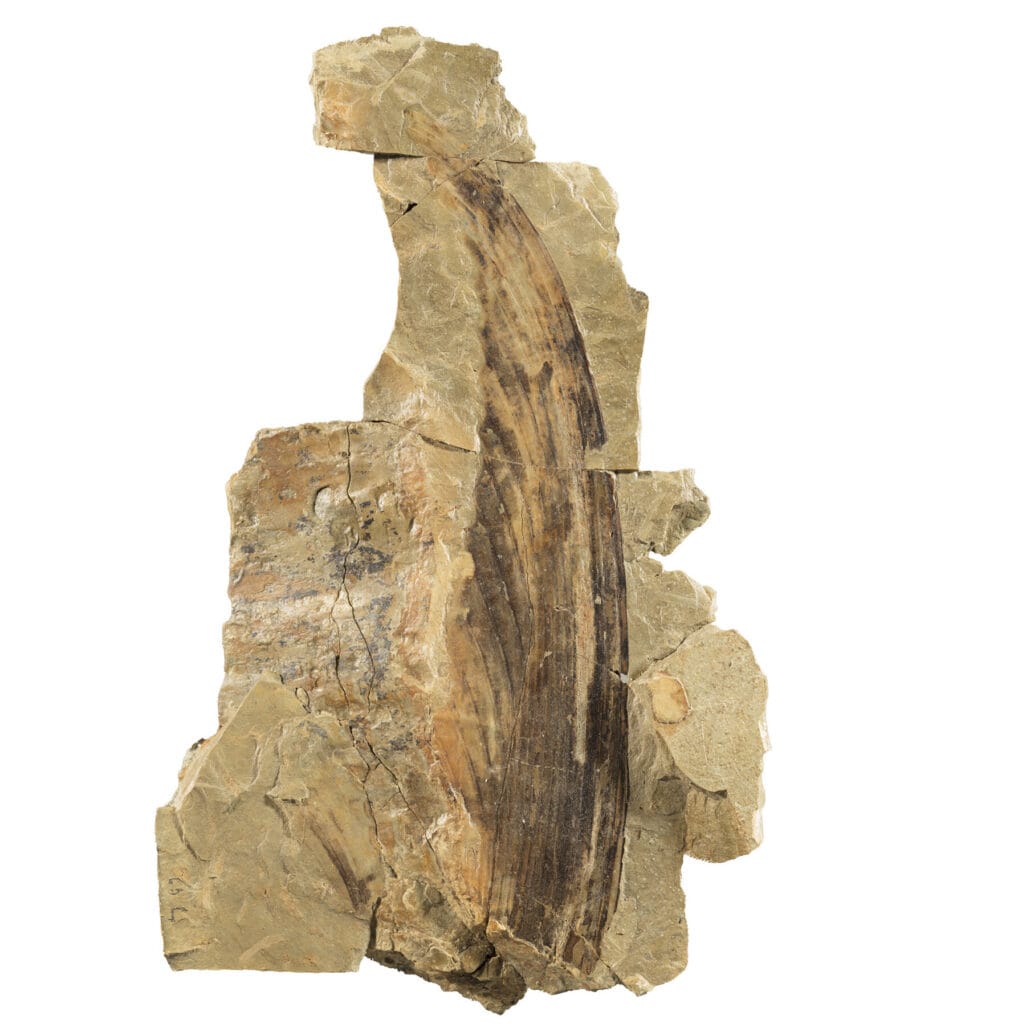
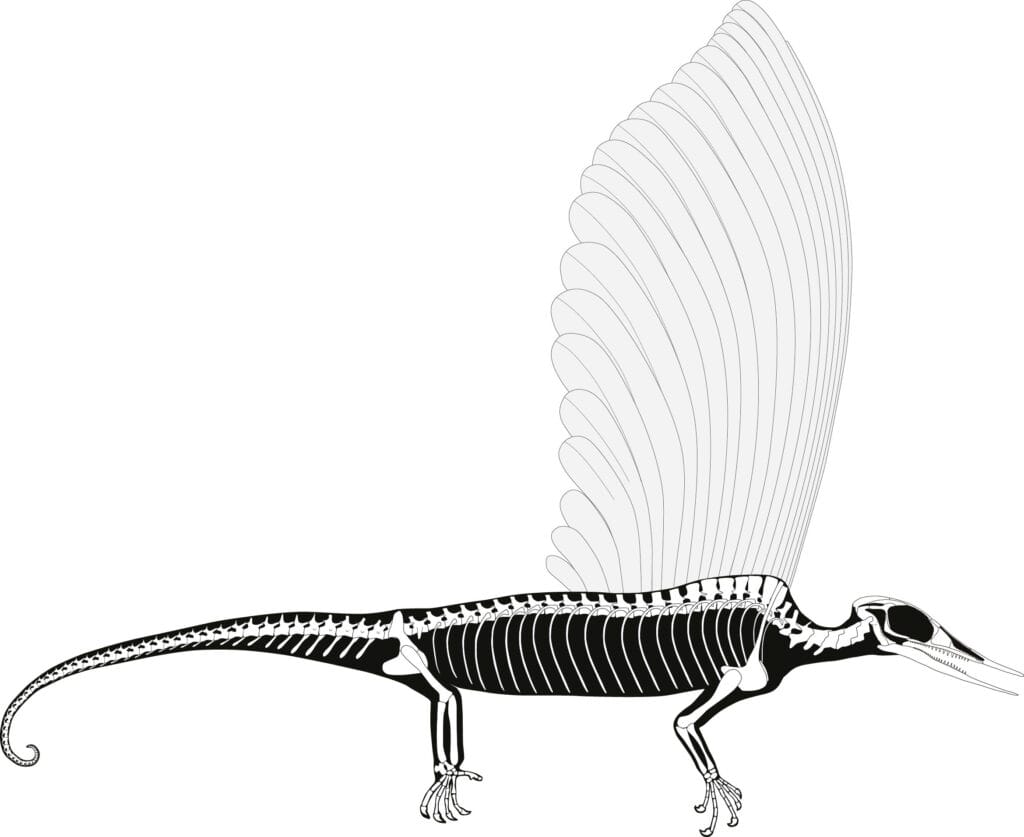
Scientists believe the crest on Mirasaura’s back, built from overlapping, stiff, elongated skin structures, was a visual signal—perhaps used to attract mates, communicate territory, or deter rivals. It may have rippled with color, fluttered with movement, and broadcast information to others in the ancient forests where Mirasaura climbed. That such a signaling system existed so early, and in a creature so removed from birds, rewrites the behavioral complexity once assumed of Triassic reptiles.
The Bird Within the Reptile
While the dorsal appendages of Mirasaura may steal the spotlight, they are far from its only strange feature. The creature’s skull—analyzed using cutting-edge synchrotron imaging at the European Synchrotron Radiation Facility (ESRF)—is a blend of reptile and bird, predator and forager. It has a narrow, toothless snout that suggests precision feeding, perhaps used to extract insects from bark crevices or hollow trees. Large, forward-facing eyes hint at keen vision and possibly even a degree of binocular depth perception. The overall skull shape, high and domed, evokes certain bird-like traits rarely seen in such ancient reptiles.
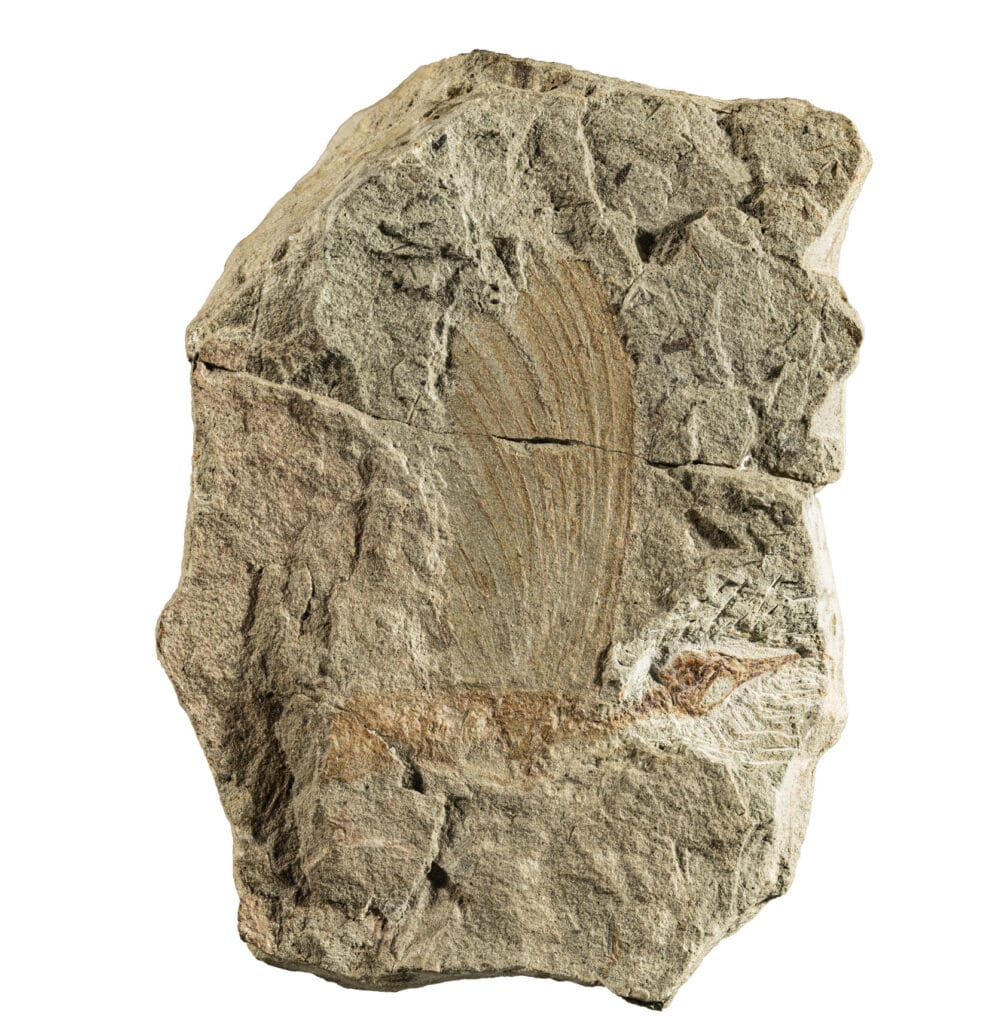
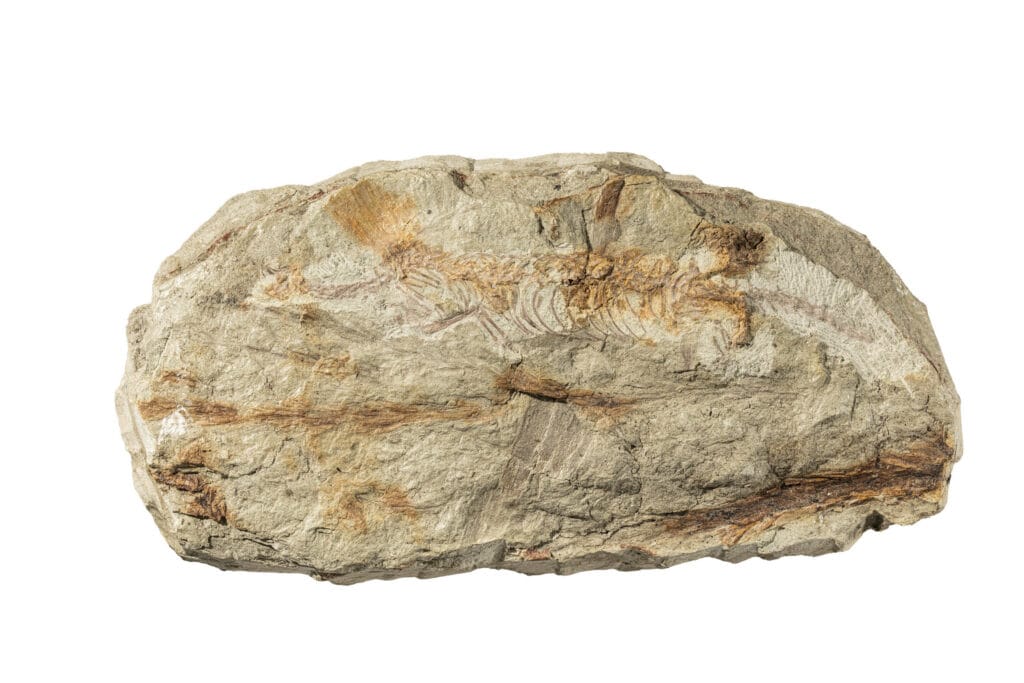
This is not entirely unexpected when considering Mirasaura’s broader family ties. It belongs to the drepanosauromorphs, a lineage of Triassic reptiles that might be best described as evolutionary eccentrics. With their prehensile tails, grasping forelimbs, and claws suited for climbing, drepanosaurs were the acrobats of their time—tree-dwellers with bodies adapted for arboreal life long before monkeys or birds ever existed.
Some drepanosaurs even had claws at the end of their tails, used like grappling hooks. In this light, Mirasaura appears less like a misfit and more like a natural extension of its already oddball family tree. But even within this lineage, the feather-like skin structures are without precedent.
The Fossil’s Whisper: Evidence in Pigment
A thin, brown film on Mirasaura’s fossilized crest offered another surprising clue. When analyzed under the microscope, this film revealed melanosomes—microscopic pigment-containing organelles. These are the structures that give color to skin, hair, and feathers in living animals. They are also surprisingly resilient and can survive fossilization under the right conditions.
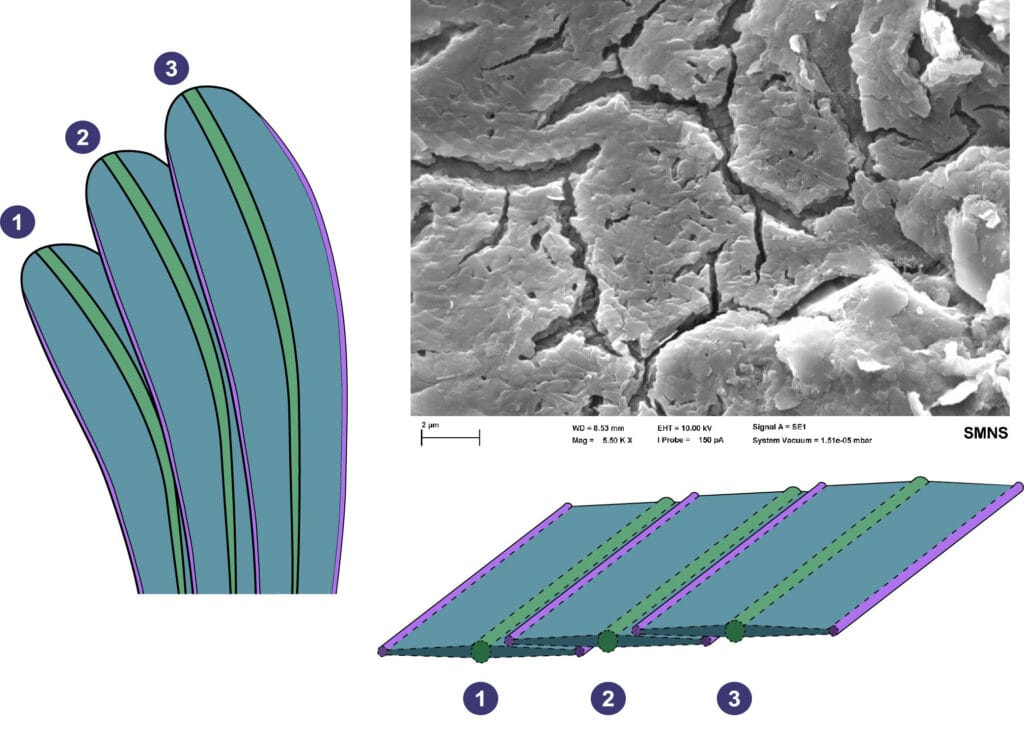
Dr. Valentina Rossi, an expert in melanosome research, examined the shape of these preserved pigments and found they were more similar to those found in feathers—both living and fossilized—than to those in reptilian skin or mammalian hair. This detail doesn’t just hint at the color of Mirasaura; it adds weight to the argument that these structures were closer, physiologically and perhaps even genetically, to feathers than previously thought.
Such findings also support earlier hypotheses from developmental biology that the genetic mechanisms for growing complex skin structures originated over 300 million years ago, long before the dinosaurs took to the skies. Mirasaura, with its unique biology and primeval age, provides direct fossil evidence that such potential was realized long before feathers as we know them ever evolved.
What Mirasaura Teaches Us About Evolution’s Playbook
Evolution is not a straight line. It is a symphony of improvisations, repeated motifs, and unexpected turns. In the case of Mirasaura grauvogeli, we are witnessing a verse that had been long lost to history—one that speaks of innovation not just at the surface of the skin, but deep within the shared code of life.
Prof. Dr. Rainer Schoch frames it beautifully: “Mirasaura shows us how surprising evolution can be and what potential it holds. It repeatedly produces similar structures independently of one another—yet also diverges in remarkable ways. This ancient reptile developed an alternative to feathers very early in Earth’s history, long before the dinosaurs, and challenges our very assumptions.”
This is more than a paleontological curiosity. It is a paradigm shift. For years, feathers were thought to be one of nature’s most brilliant singularities—an adaptation so precise and effective that it could only have come once. Now, we know better. Nature doesn’t just copy herself. She experiments. She recycles. She finds new paths to old solutions. The boundaries between mammals, birds, and reptiles, once so clearly drawn in biology textbooks, are now porous and ever-shifting.
A Forest Reborn After Death
To fully appreciate Mirasaura, we must remember the world it inhabited. The early Middle Triassic was a time of ecological rebirth. Just a few million years earlier, the Earth had suffered the most devastating mass extinction in its history—the Permian-Triassic extinction, which wiped out more than 90% of marine species and 70% of terrestrial vertebrates. Life, it seemed, had barely survived.
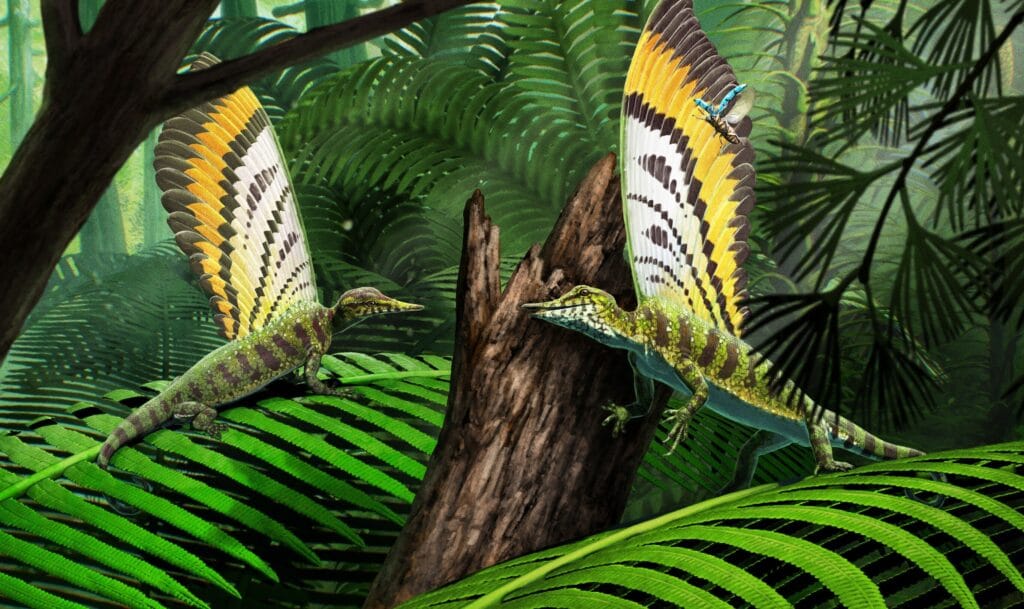
And yet, in the aftermath of ruin, the forests returned. Plants repopulated the land. Insects filled the air. And animals like Mirasaura evolved to take advantage of the vertical world—the trees.
This was not just survival. It was renaissance.
Mirasaura climbed in forests that echoed with the buzz of insects and the calls of distant relatives. It crept through the canopies of a world healing itself, adapting to new niches with a flourish of evolution’s finest tricks. Its crest wasn’t merely ornamental—it was a celebration of survival, of complexity reborn from catastrophe.
Grauvogel’s Legacy
It is fitting that this small reptile bears the name of Louis Grauvogel, the man who first unearthed its bones nearly a century ago. For decades, his collection sat silently, its importance unknown, its story incomplete. Only through careful preparation, new technologies, and the collective wisdom of scientists across nations did Mirasaura finally emerge into the light.
Now, the fossils of Mirasaura grauvogeli reside in the paleontological collection of the State Museum of Natural History Stuttgart, where they are studied, celebrated, and reexamined in the context of a broader evolutionary narrative. One in which feathers, crests, and complex skin outgrowths did not evolve once, but many times. One in which tree-dwelling reptiles became canvases of biological expression, long before birds ever beat their wings.
Reference: Stephan Spiekman, Triassic diapsid shows early diversification of skin appendages in reptiles, Nature (2025). DOI: 10.1038/s41586-025-09167-9. www.nature.com/articles/s41586-025-09167-9
